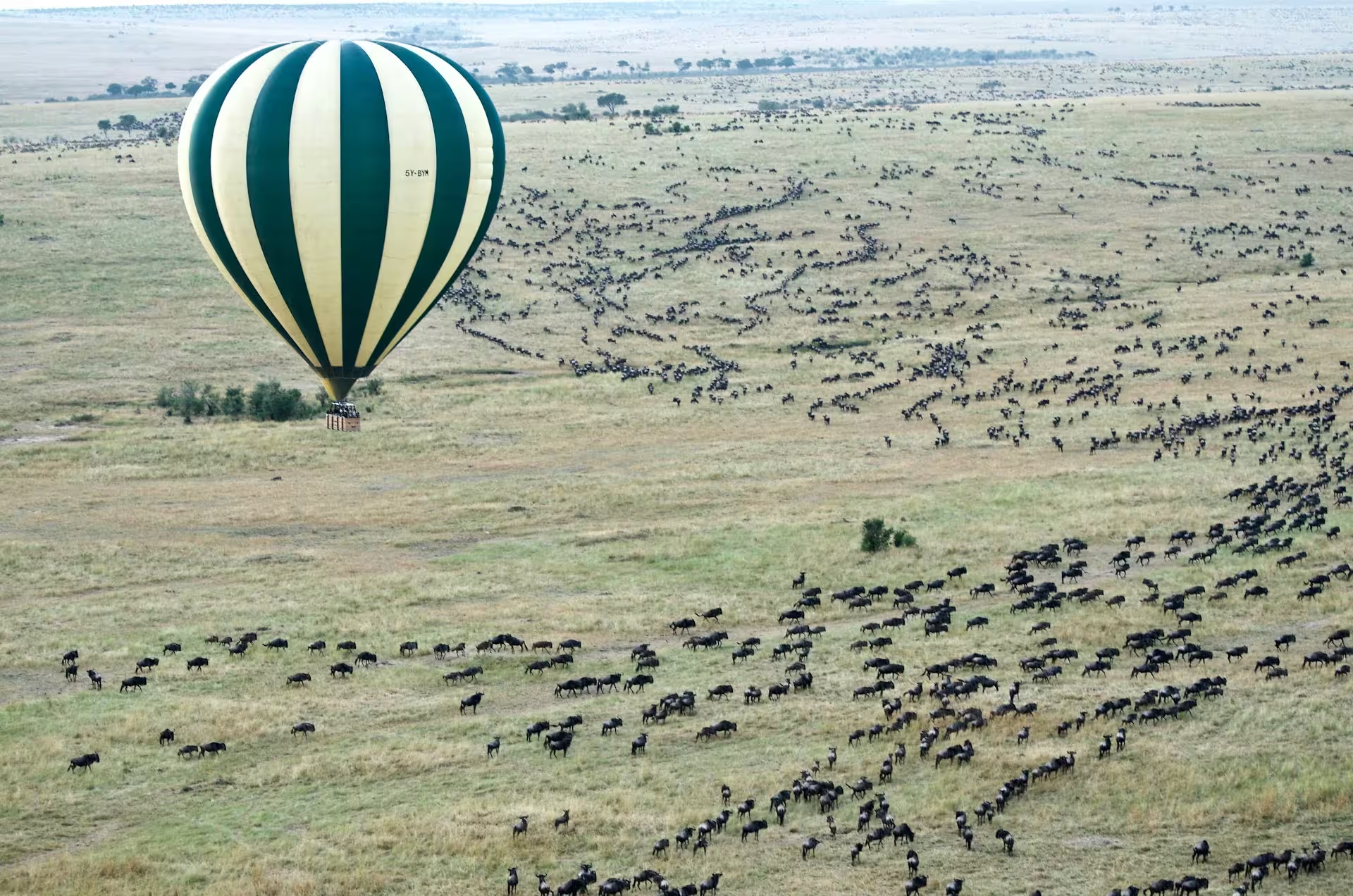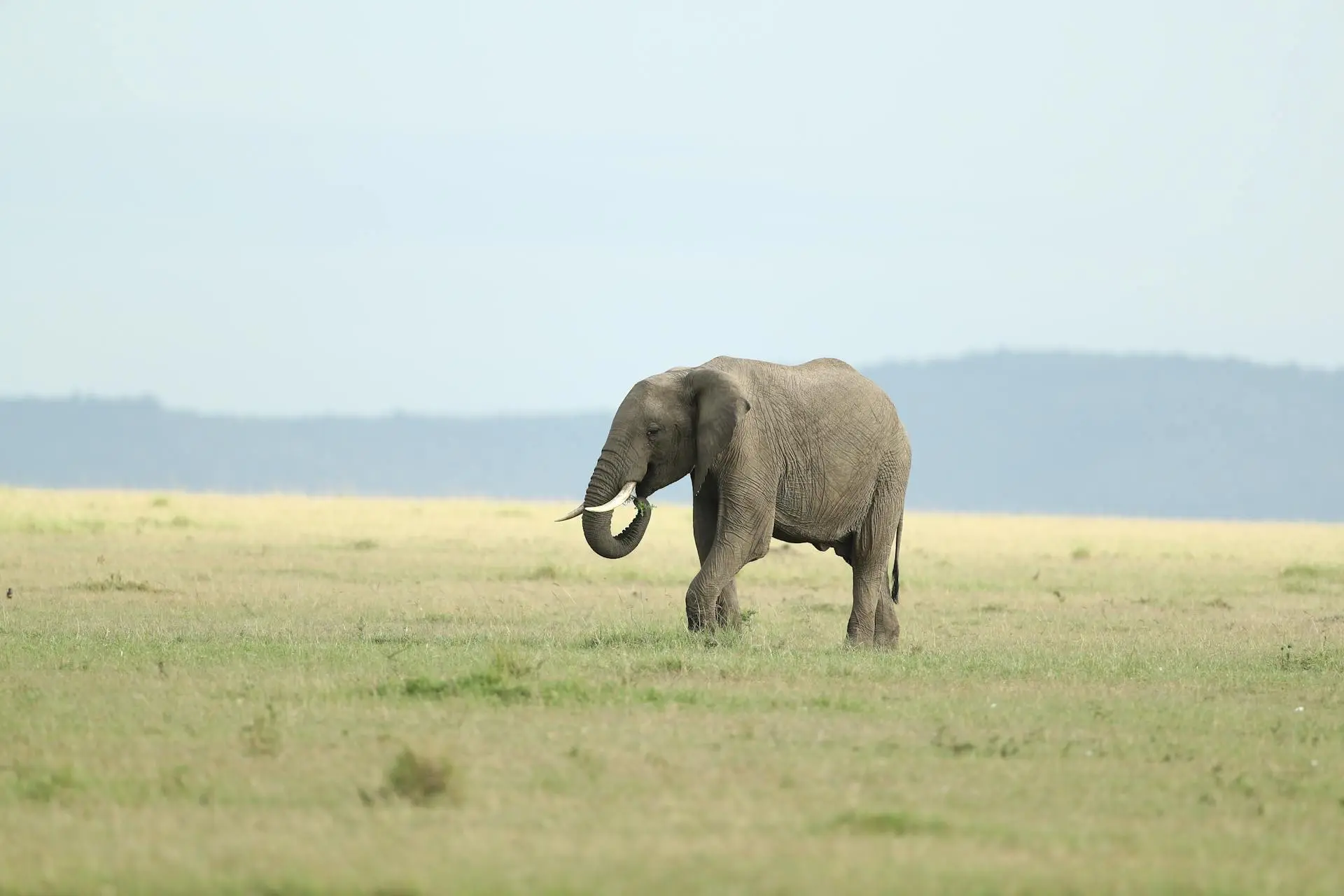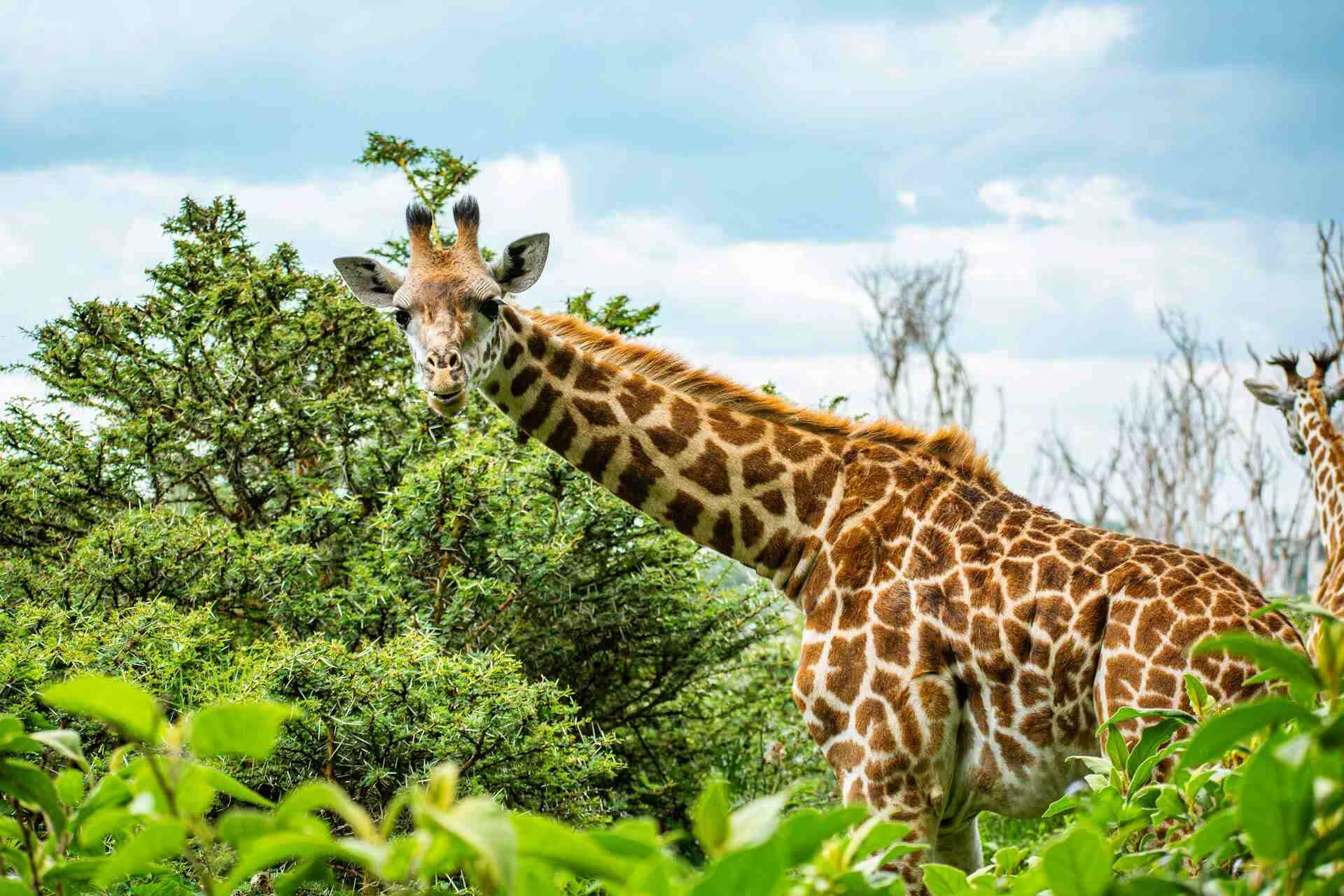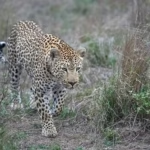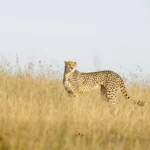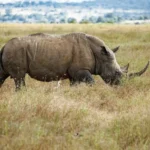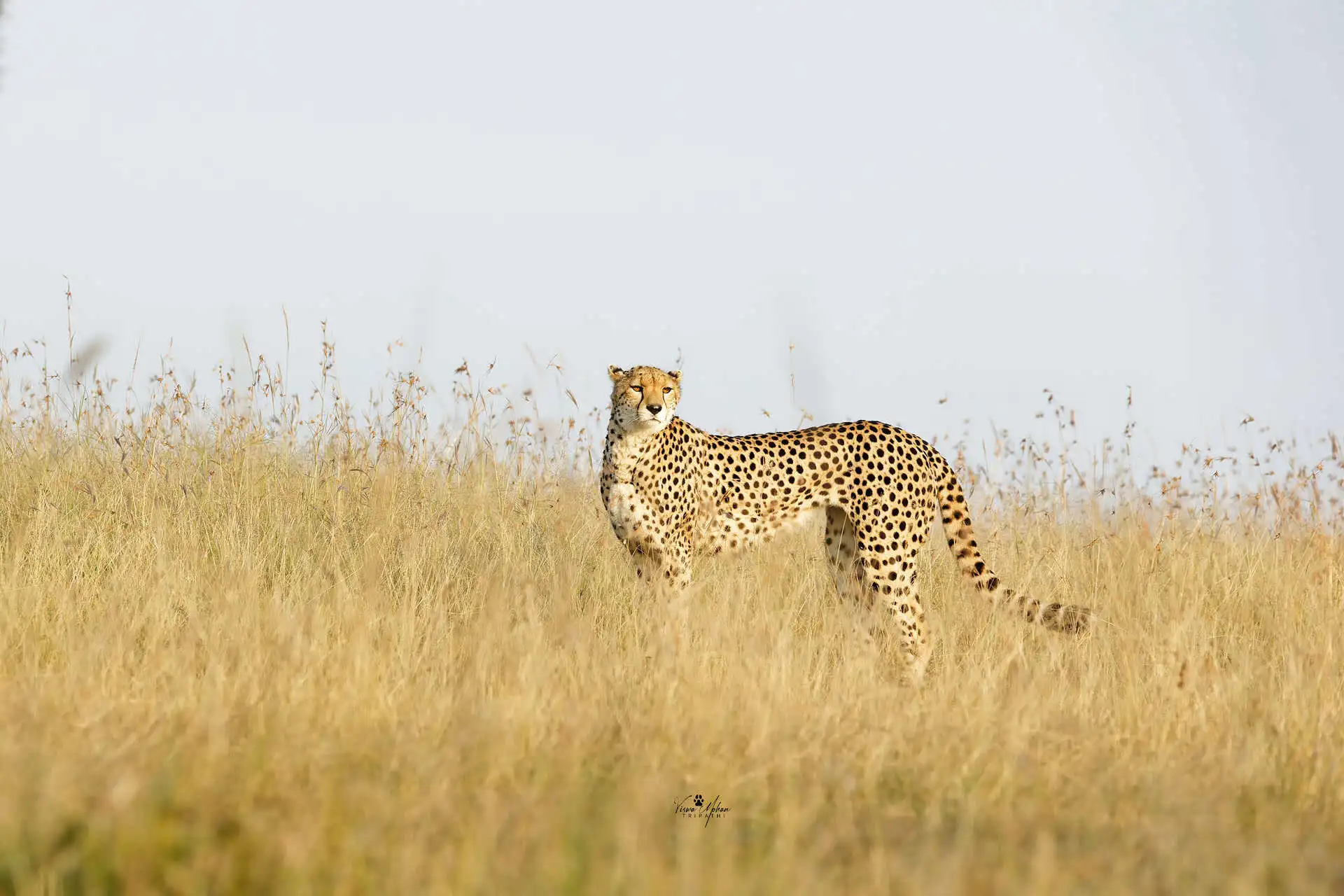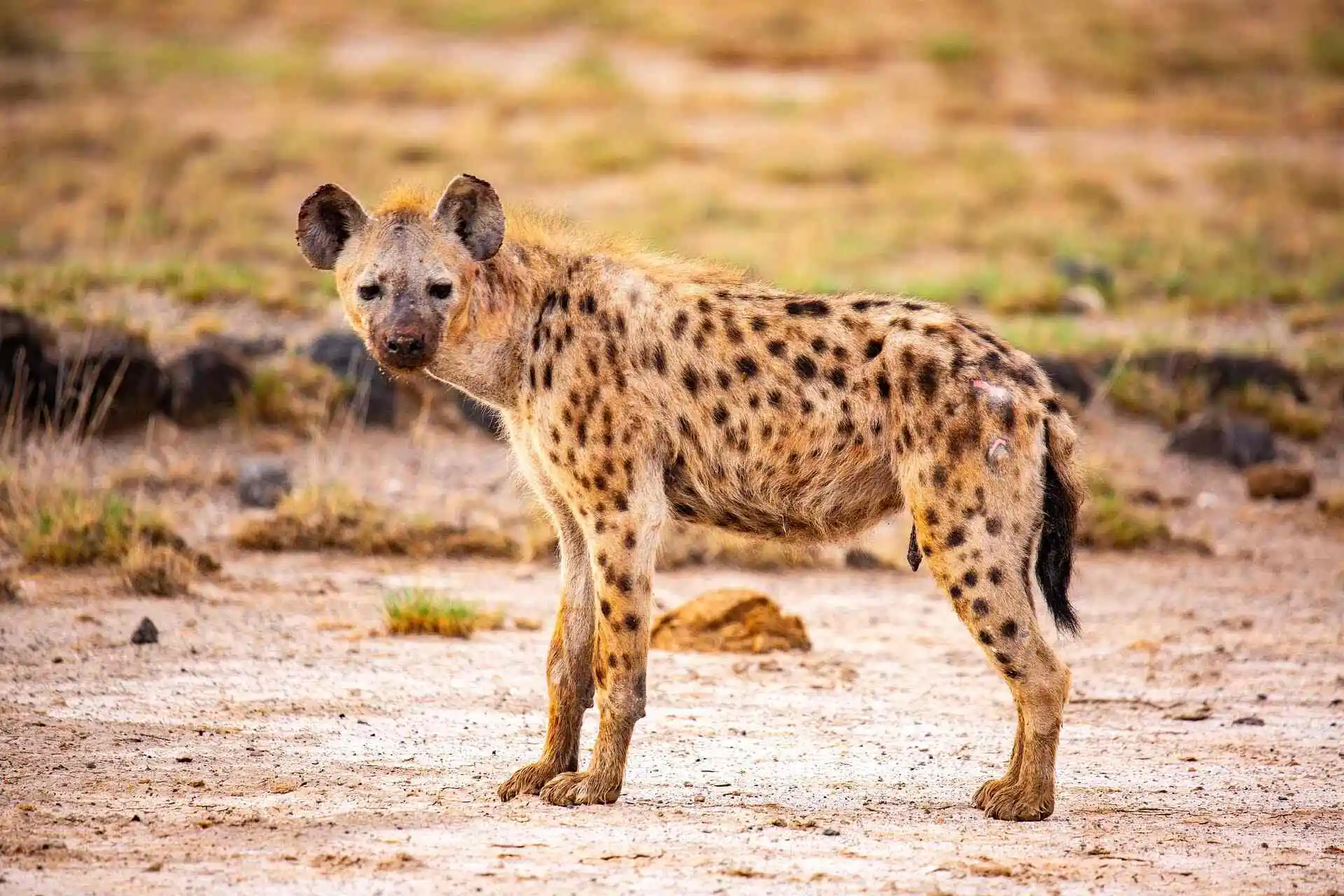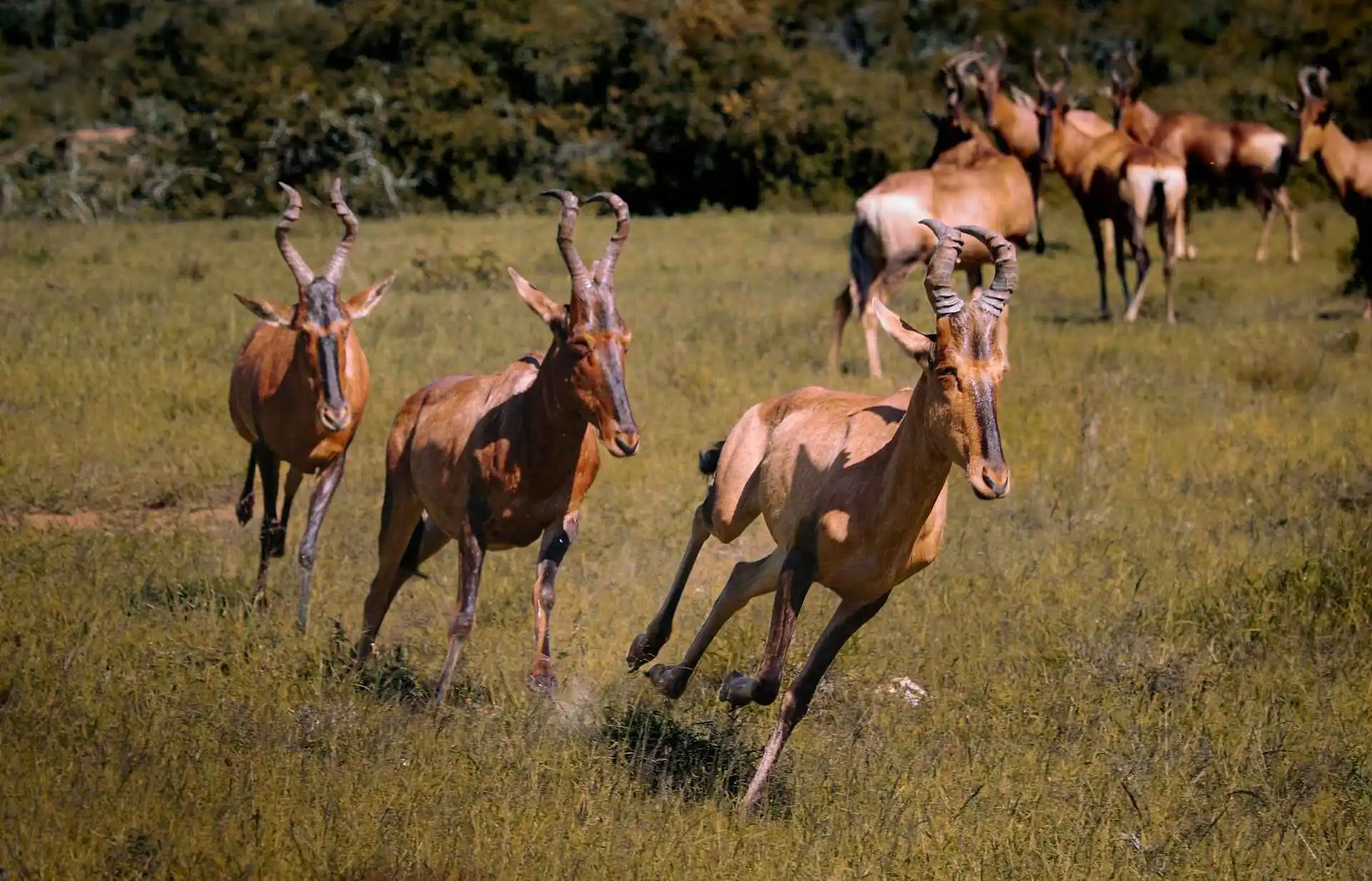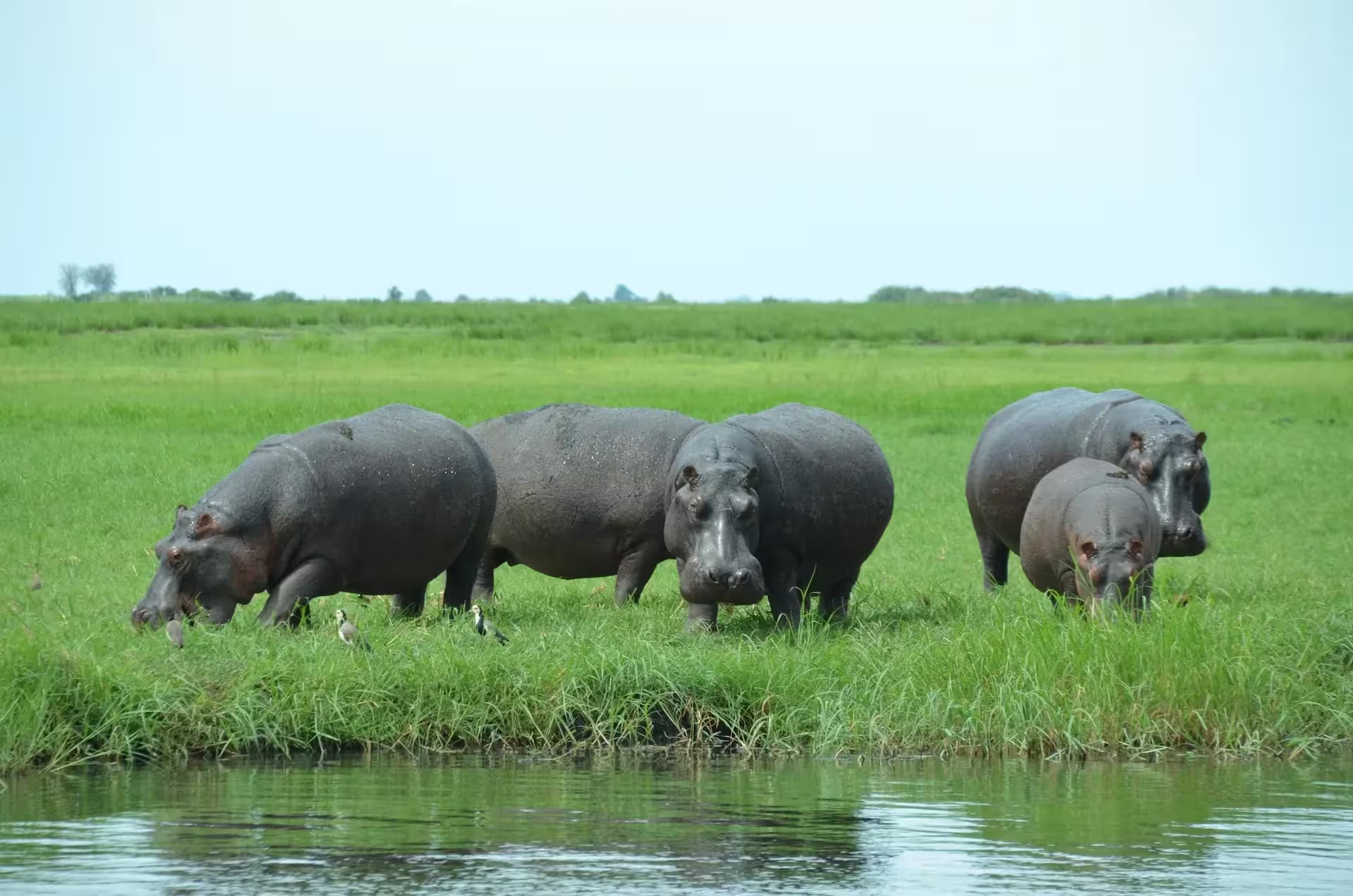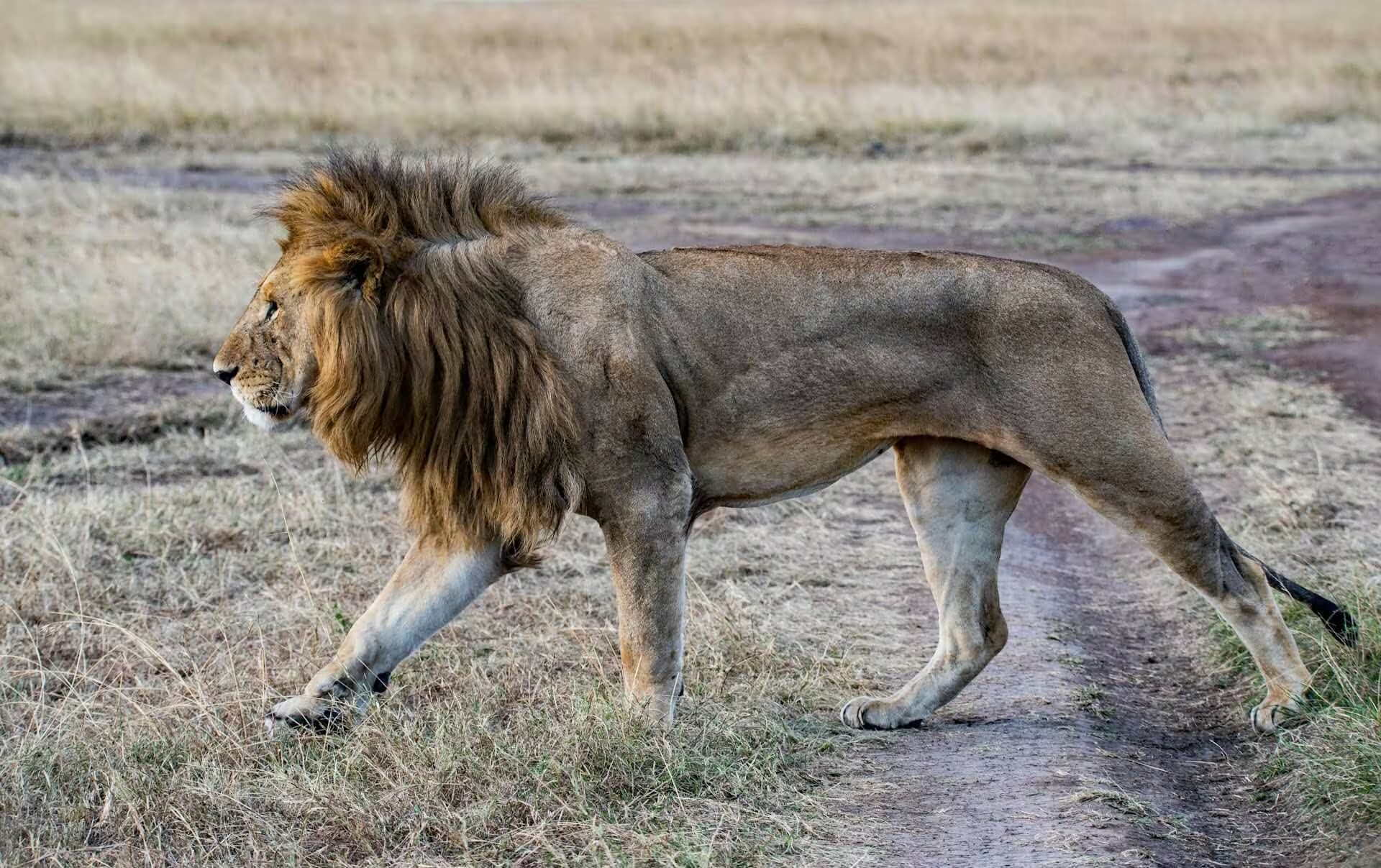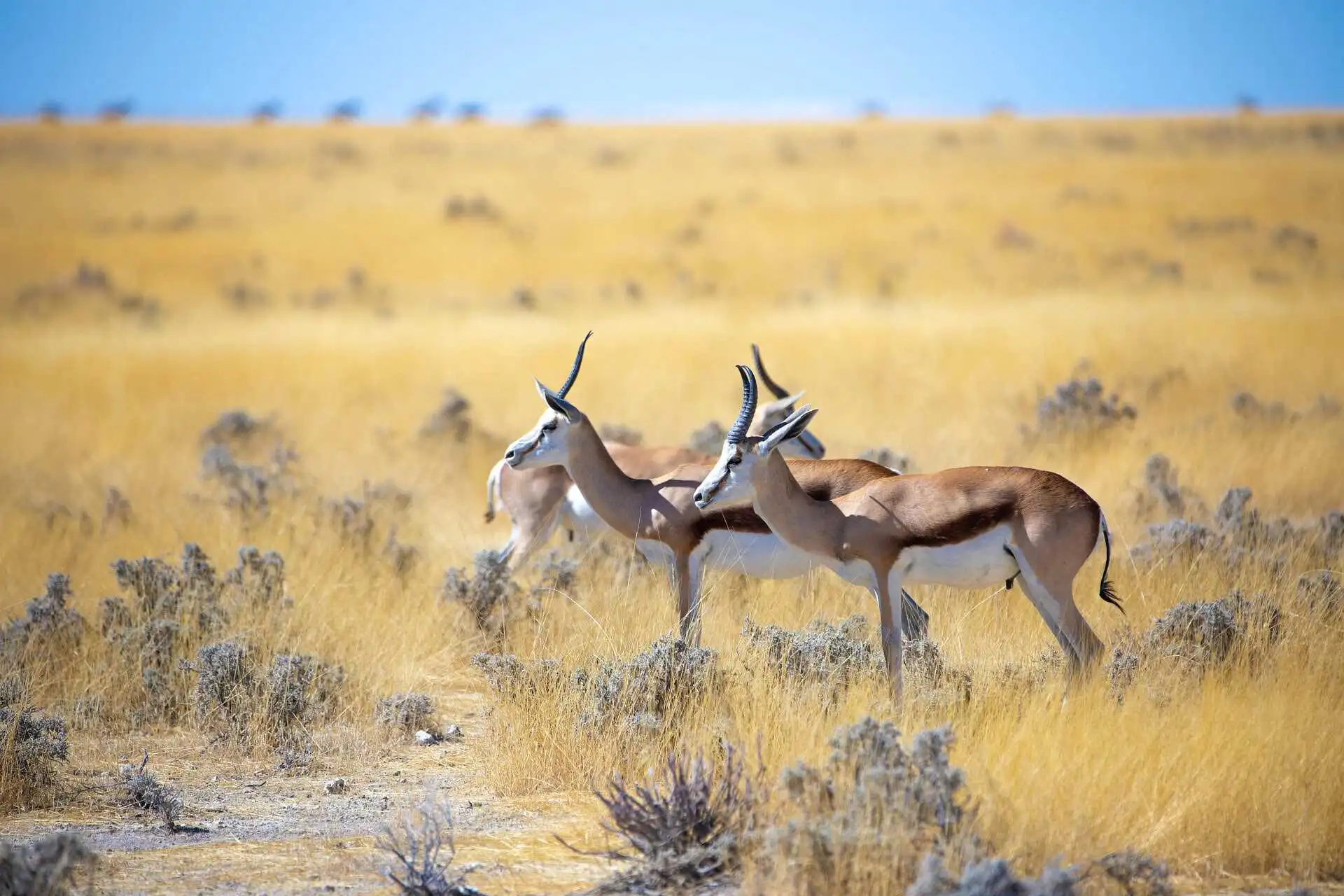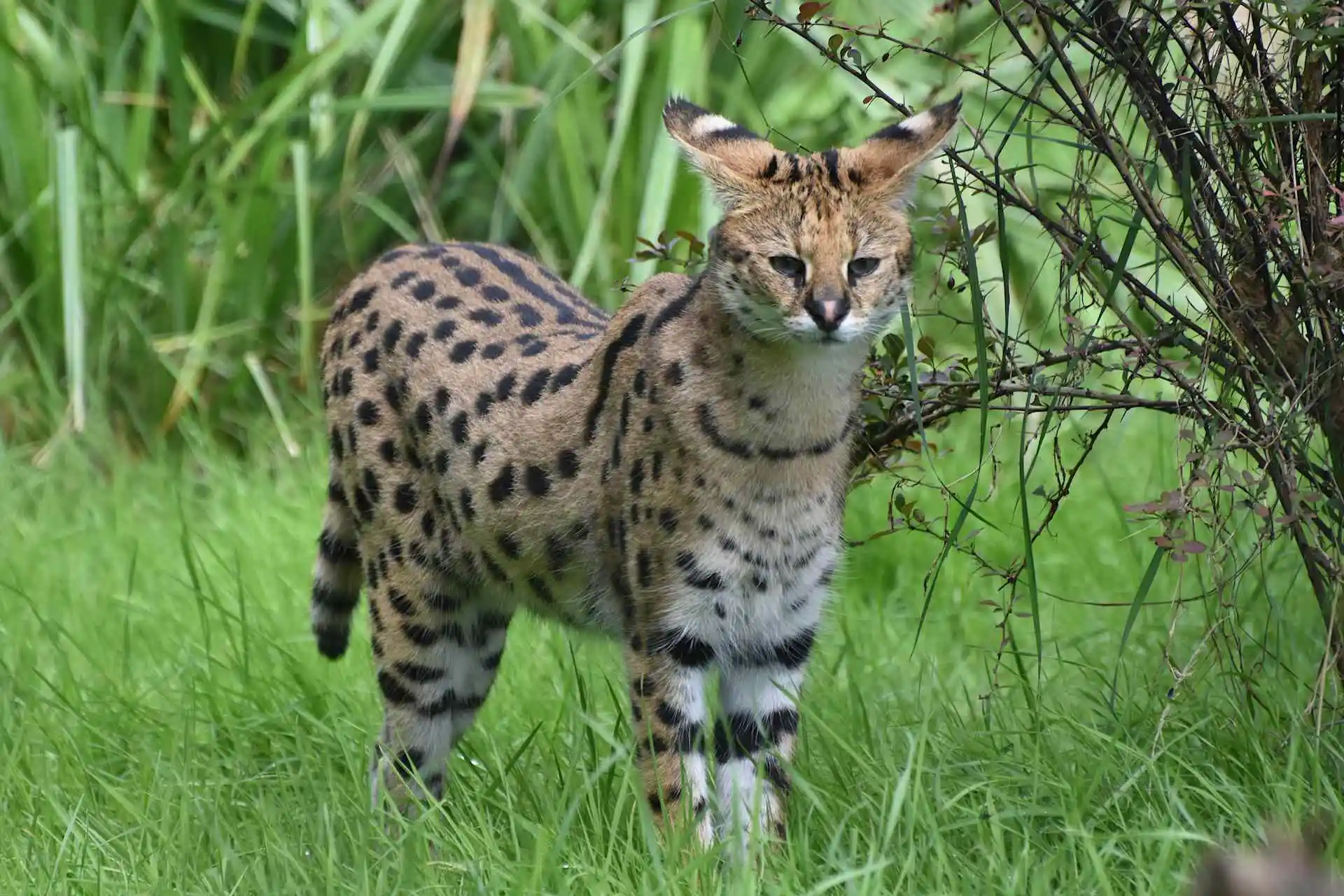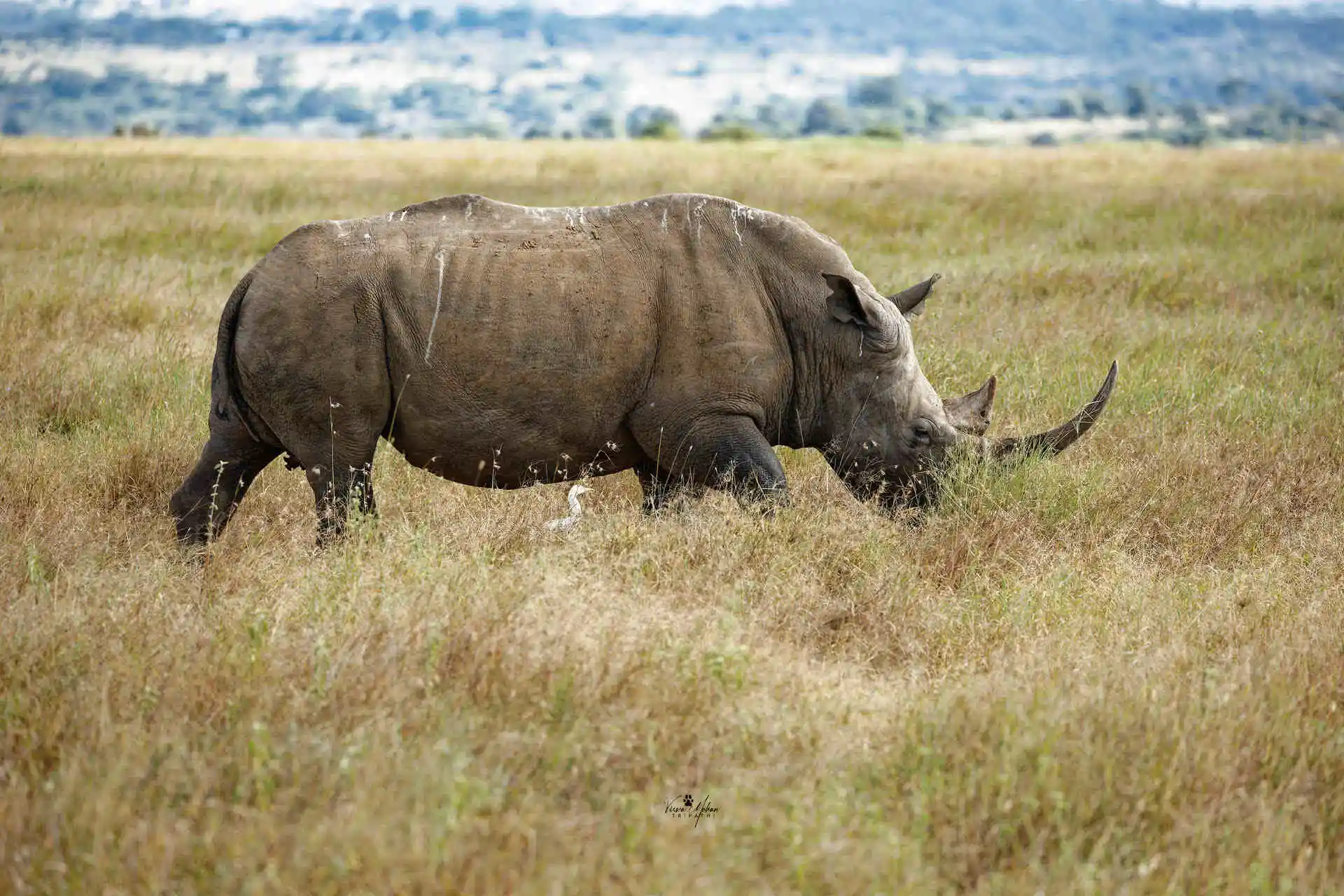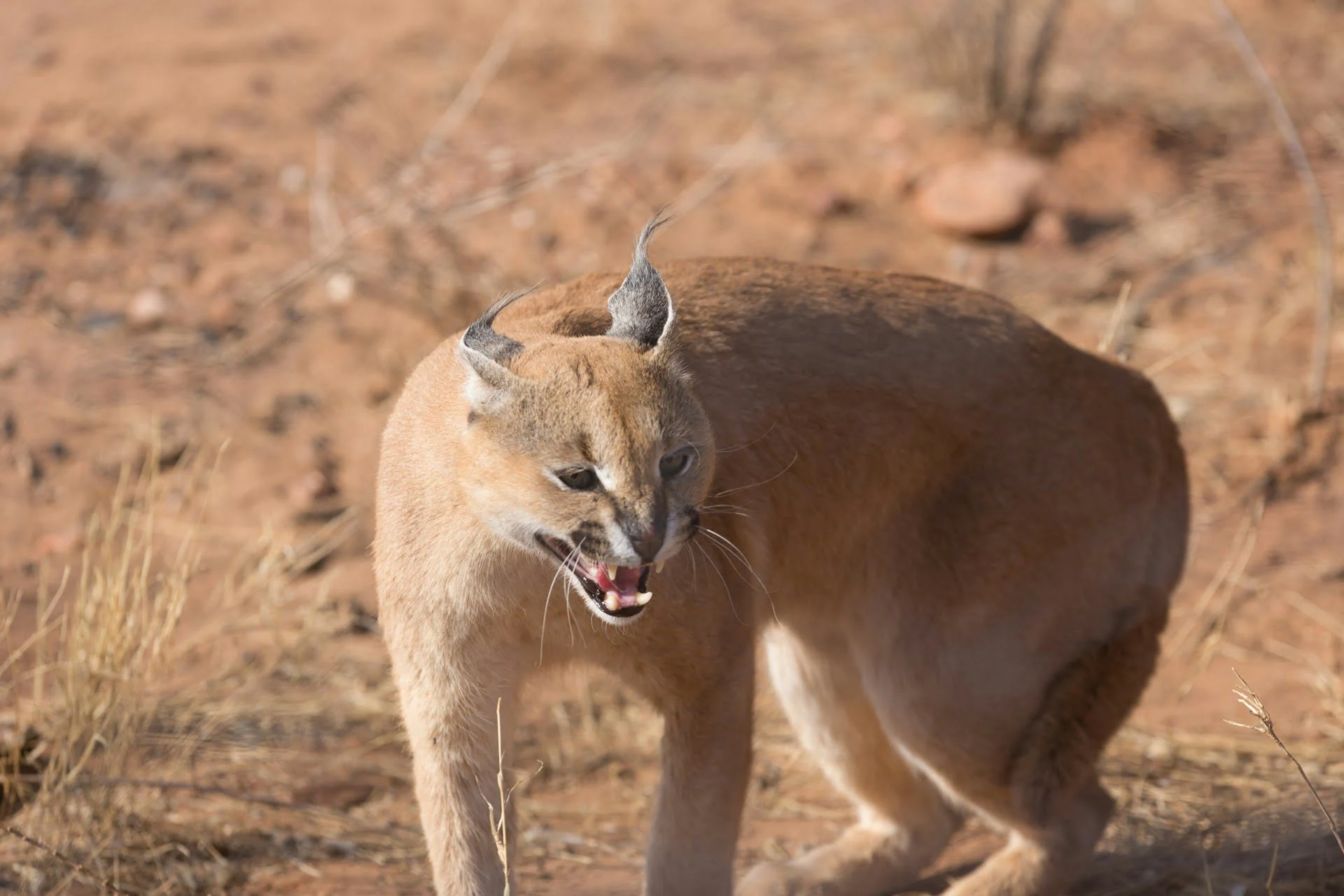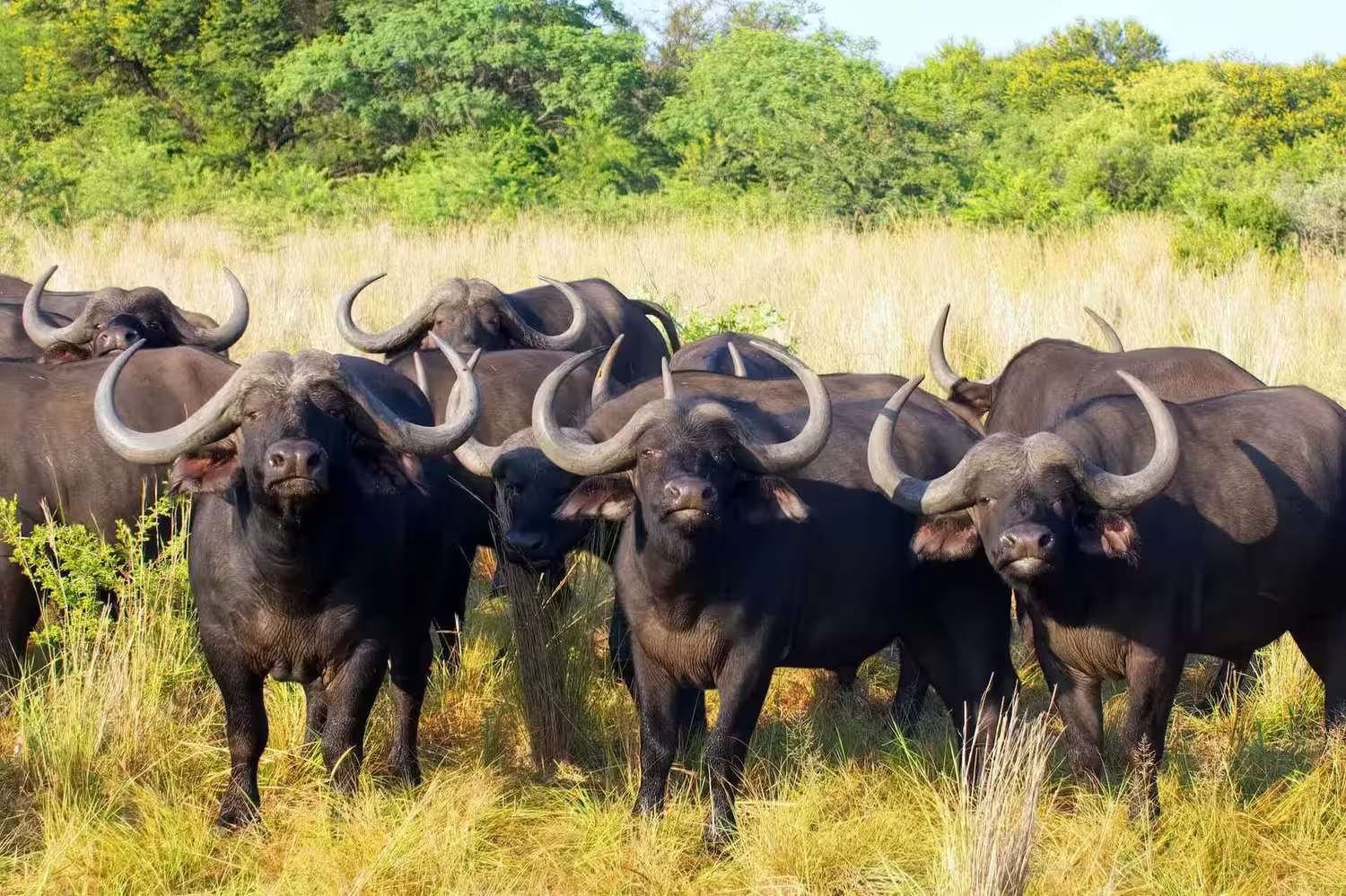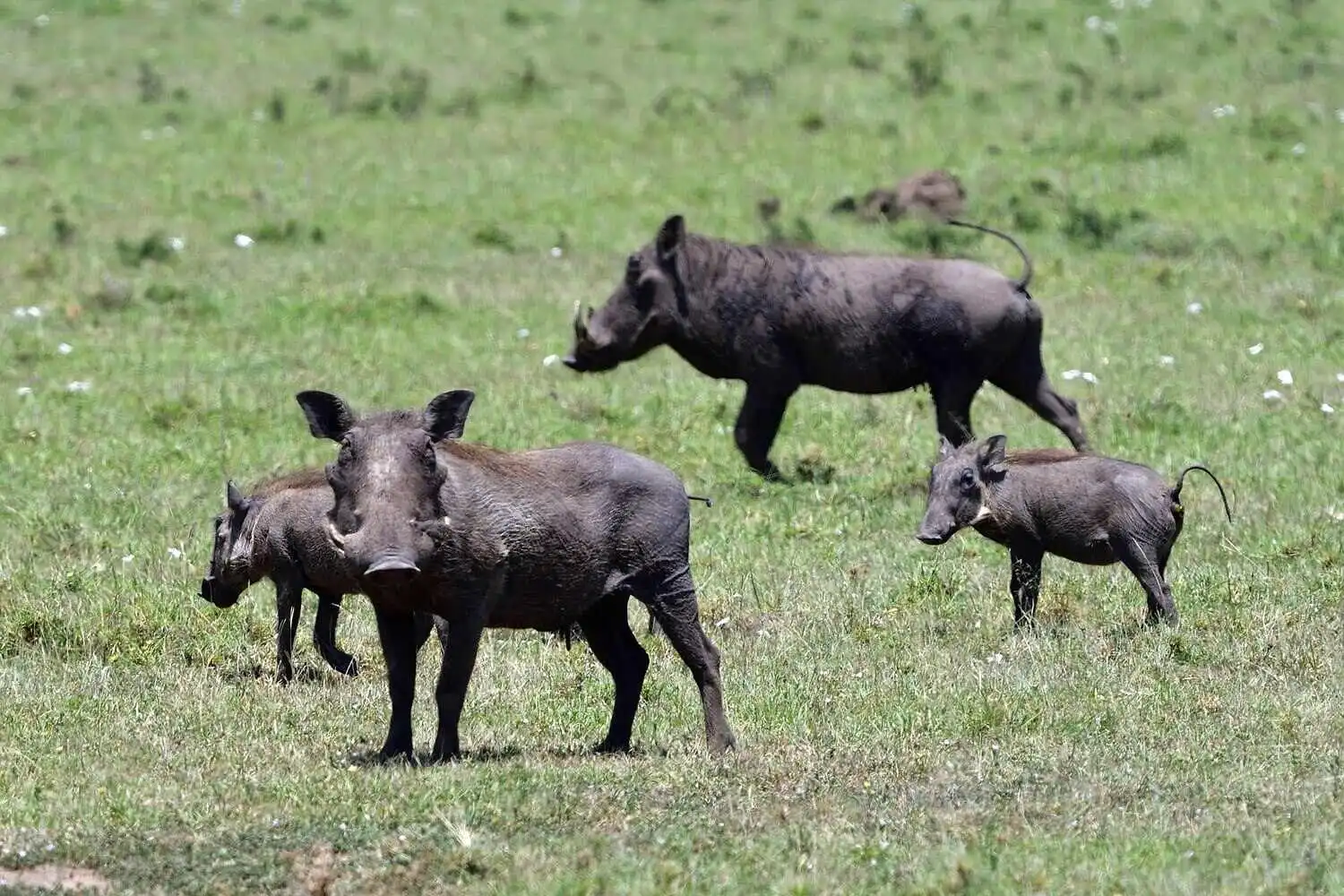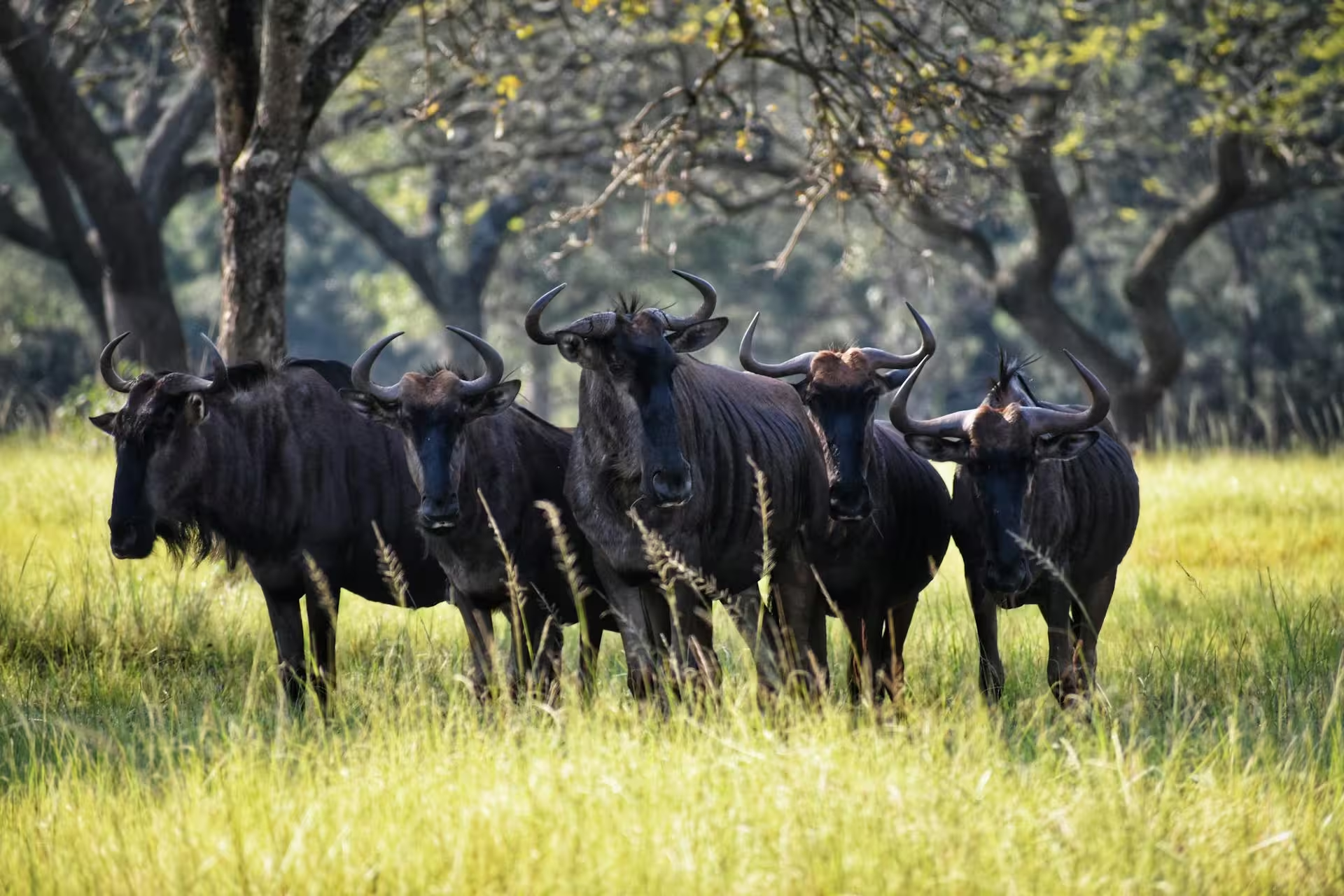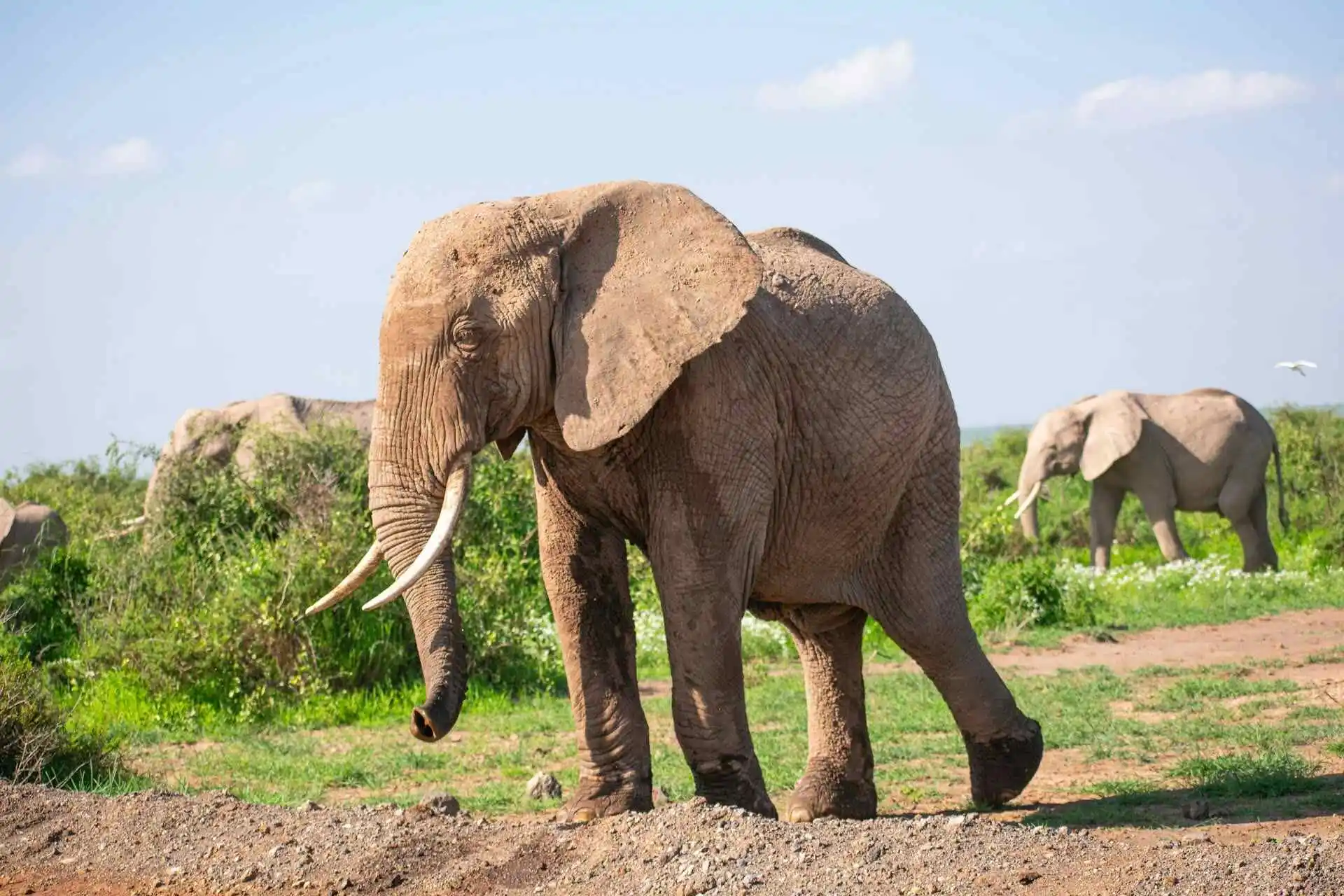How does the Thomson’s Gazelle look?
Thomson’s gazelles are small, graceful antelopes known for their sleek builds and quick reflexes. They have tan backs, white bellies, and a distinct black stripe running down each side. Both males and females have slender, slightly curved horns—though the male’s are usually thicker and longer.
Their alert eyes, delicate legs, and upright tails give them a look of constant awareness—because in the wild, they always need to be on guard.
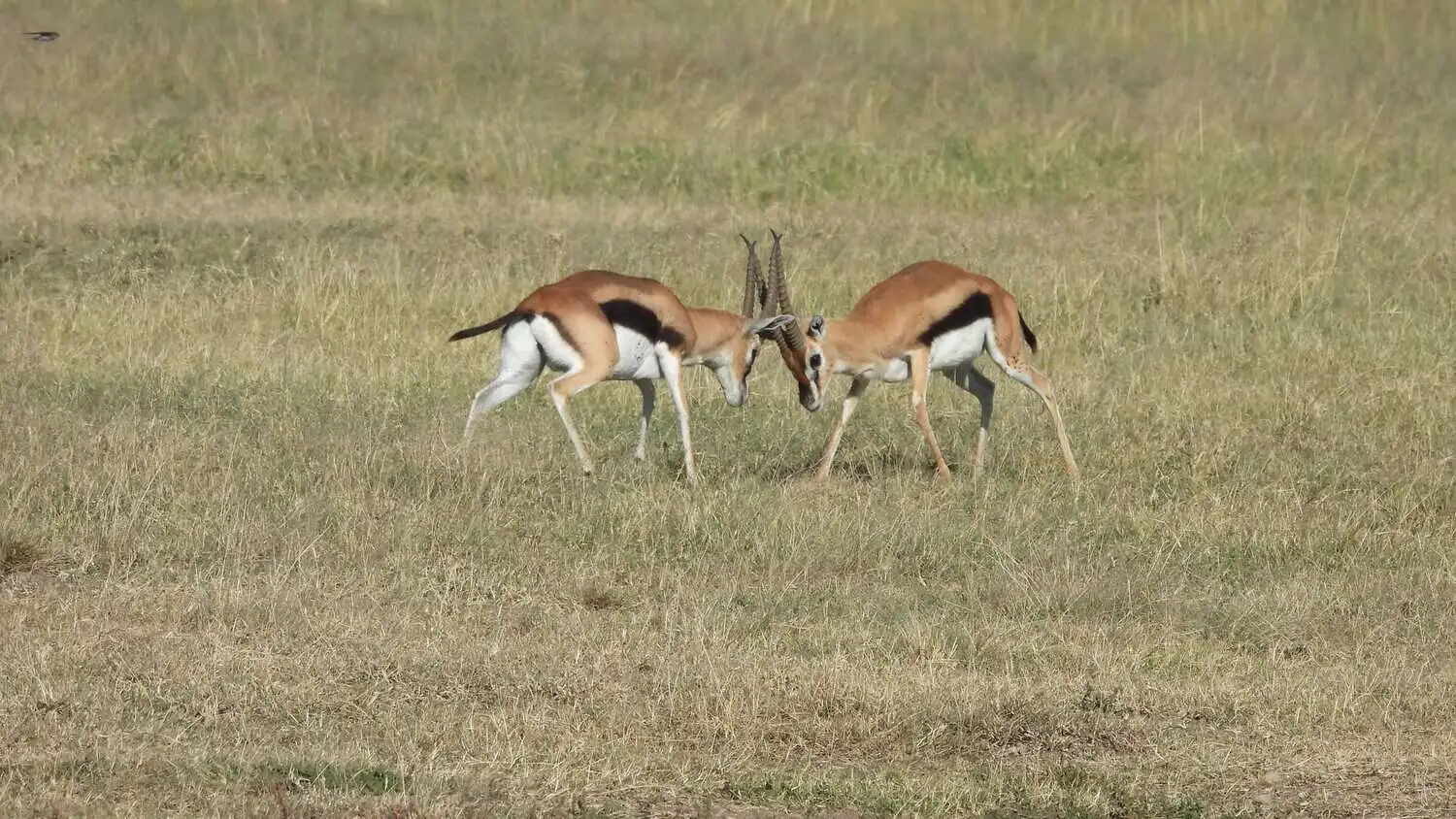
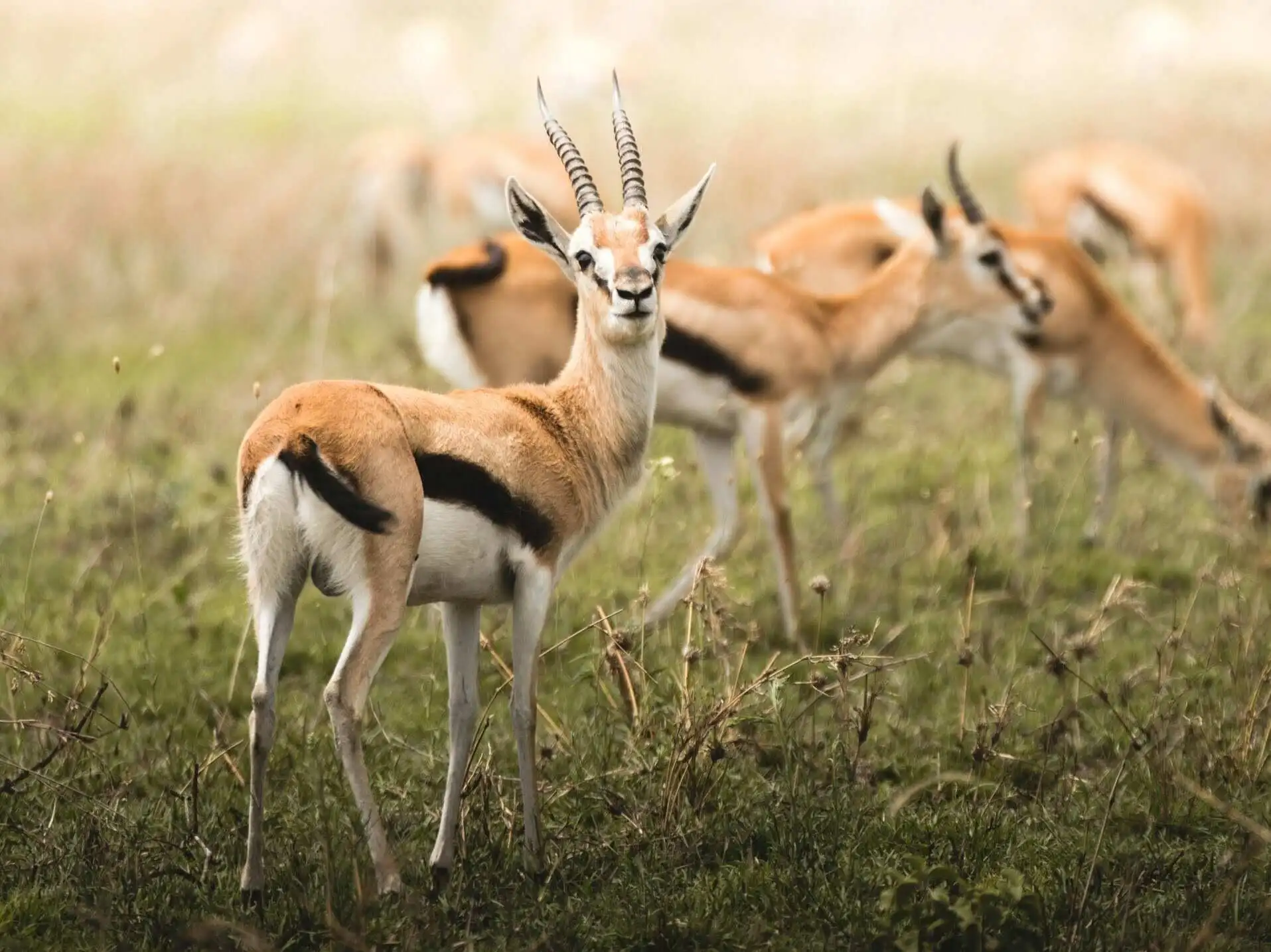
Quick Characteristics Table – Thomson’s Gazelles
| Characteristic | Description |
|---|---|
| Scientific Name | Eudorcas thomsonii |
| Family | Bovidae (Antelope) |
| Geographic Range | East Africa, primarily Kenya and Tanzania (Serengeti/Masai Mara) |
| Habitat | Open, short grasslands and savanna |
| Size (Shoulder Height) | 58 to 70 cm (23 to 28 in) |
| Weight | 15 to 35 kg (33 to 77 lbs) |
| Top Speed | Up to 80 km/h (50 mph) |
| Distinctive Feature | Black horizontal stripe along the flank; tail wags side-to-side (windshield wiper) |
| Diet | Herbivore (primarily grazers on short, green grass) |
| Social Behavior | Highly social; live in herds (often follow Wildebeest and Zebra) |
| Unique Behavior | Pronking or Stotting (stiff-legged jumping to signal fitness/danger) |
| Conservation Status | Least Concern (but sometimes listed as Near Threatened due to population decline) |
What do Thomson’s Gazelles eat?
Thomson’s gazelles are grazers. They love fresh, green grass especially after the rains. But when things get dry, they’ll switch to leaves, seeds, and shrubs to keep going. Their diet helps support big migrations across East Africa.
They mostly feed during cooler times early mornings and evenings to avoid the heat and predators.
Why Thomson’s Gazelles matter
They might be small, but they’re a vital part of Africa’s grassland ecosystem. Thomsons are a major prey species for cheetahs, lions, leopards, and wild dogs. Their alertness and speed help them survive, but they also help predators stay fed.
In local communities, these gazelles are often seen as symbols of alertness, grace, and agility.
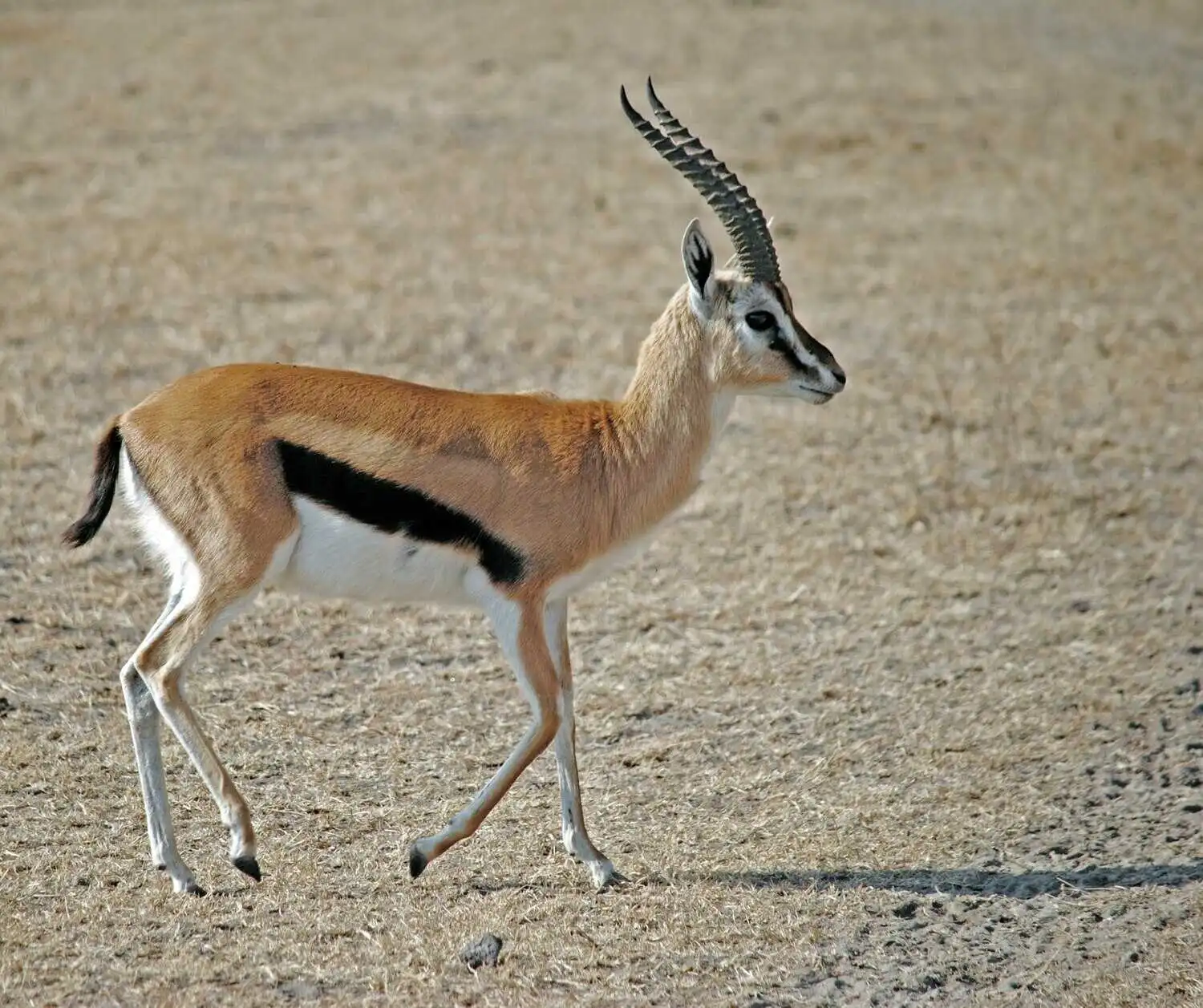
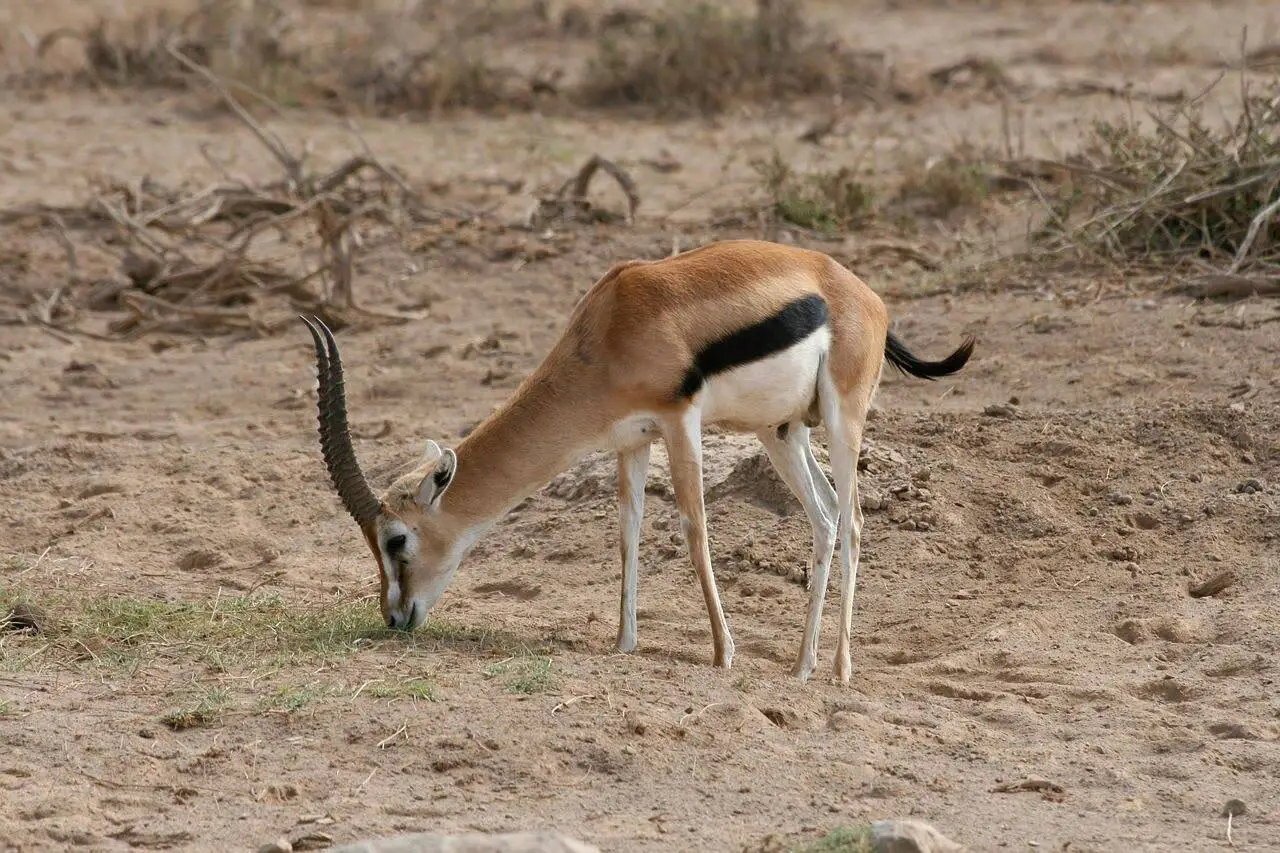
Fun facts about Thomson’s Gazelles
- They can run up to 80 km/h (50 mph) in short bursts ideal for dodging predators like cheetahs.
- Their zigzag escape pattern makes it hard for predators to catch them.
- They are one of the most abundant antelope in East Africa.
- They rely more on sharp eyesight and alert behavior than hiding.
- Newborn fawns can stand within 15 minutes after birth.
Top National Parks to See Them
You’ll find Thomsons across open plains in East Africa especially during the Great Migration. Here are the best spots:
- Masai Mara National Reserve, Kenya: Home to thousands of Thomsons often seen in big groups on the savannah.
- Serengeti National Park, Tanzania: A prime spot, especially during migration season when they move in huge herds.
- Ngorongoro Crater, Tanzania: Excellent place to see them year-round in a unique, enclosed ecosystem.
- Amboseli National Park, Kenya: With open plains and Kilimanjaro as the backdrop, they’re easily spotted here.
- Lake Nakuru National Park, Kenya: Often found near the grasslands surrounding the lake.
Whether you’re visiting during the migration or year-round, these parks offer unparalleled opportunities to witness the grace and agility of Thomson’s gazelles in their natural habitats.
Top Safaris to Spot Thomson’s Gazelles
Join our safaris and witness the elegance and speed of Thomson’s gazelles across Africa’s vast savannahs. Guided by expert trackers, you’ll explore the open plains where these graceful creatures roam freely. It’s a breathtaking adventure filled with unforgettable moments. Let your journey begin!

